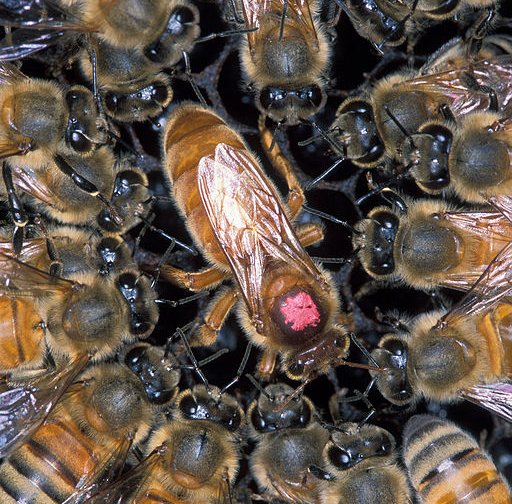In the wake of widespread declines in bee populations, farmers and beekeepers are wondering who exactly is going to pollinate that third of the world’s food crops which require pollination. The declines have been attributed to pesticides, parasites and climate change.
In Europe one response has been to phase out a class of pesticides called neonicotinoids. The phase-out has coincided with a revival of bee populations. But pesticides are clearly not the only factor affecting bee health.
Another response has been to consider building a better bee. Enter the geneticists. Why not genetically engineer honeybees to resist those things which are undermining their health?
That seems a little like suggesting that we take carbon out of the atmosphere to address climate change without doing anything about the carbon we are putting into the atmosphere.
Moreover, the original idea behind the genetic engineering of bees is the same as that behind plants and even humans: One gene equals one trait. It turns out there are three problems with this idea. First, genes are multitaskers in honey bees (and in humans, too). That means genes can make more than one kind of protein which means that the idea that one gene always equals one trait has long since been disproved. Second, gene expression depends on a number epigenetic factors, that is, factors that occur during the development of the organism. Third, the term “trait” has the problem that all words have. It’s ambiguous. (And, if you tell me “trait” has a very precise definition in genetics, then you will almost certainly use words to convey that definition.)
The world of the bee, or any living creature for that matter, is seamless. There are no gaps in the bee that divide it into “traits.” “Traits” are a human invention. Beyond this, there are no gaps between the bee and its environment. The bee and its environment are not separable. No geneticist can possibly model the bee and its environment under all possible circumstances in all possible places—nor discover in advance the effects that engineering one “trait” will have on all the others. The intended effects (and unintended effects) of genetic engineering cannot be forecast with any accuracy for the bee and the entirety of its environment (which, of course, is our environment, too). As Garrett Hardin, the author of the first law of ecology, reminds us, “we can never merely do one thing.”
The bees we have in the wild today are the products of billions perhaps trillions of iterations, some done in cooperation with beekeepers—but none done with genetic splicing techniques. One experiment in crossbreeding European honeybees with aggressive African honeybees (killer bees) went awry when the crossbreeds left the lab and then became the dominant species moving all the way from South America to the U.S. border by 1985 where they have been slowly spreading northward. This is all the more reason to keep breeding close to home.
Moreover, the genetic engineering of bees would privatize the process of pollination itself, enclosing yet one more piece of the agricultural commons for giant agribusinesses—and holding us hostage to their monopolistic practices if, as seems likely, the privatized engineered bees drive the “less fit” regular bees out of existence.
The final disaster in such a sequence would be the weaponization of genetically engineered bees to carry plant viruses that kill an enemy’s crops. But science fiction turned out to be science fact when it was revealed that the U.S. Defense Advanced Research Projects Agency is working on insects that “carry immune-boosting mutations designed to protect crops from drought, flooding, pathogens and bioweapons.” But, of course, this military agency would never dream of using such technology as a weapon, would it?
Unfortunately, it’s actually easy to imagine dumber ideas than genetically engineered honeybees. But that’s because these days there is a lot of competition for dumbest idea ever. If you are a regular reader, you already have my list of really dumb ideas. Clean coal comes to mind as does synthetic biology. Now you can add genetically engineered honeybees.
Photo: “Closeup of Africanized honey bees (AHBs) surrounding a European queen honey bee (EHB), marked with a pink dot for identification. Since AHBs arrived in Texas in 1990, they’ve mated with EHBs and spread throughout the Southwest. But rather than commingling, AHBs tend to replace EHBs, partly because EHB queen bees mate disproportionately with African drones” (2005). By Scott Bauer, USDA Agricultural Research. Service. https://commons.wikimedia.org/wiki/File:Apis_mellifera_scutellata_1355021.jpg






